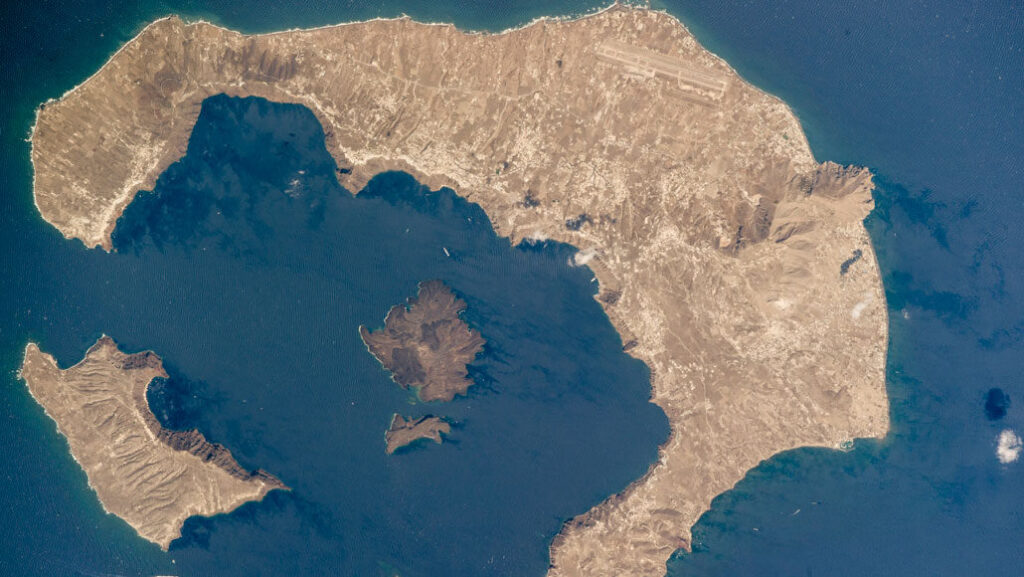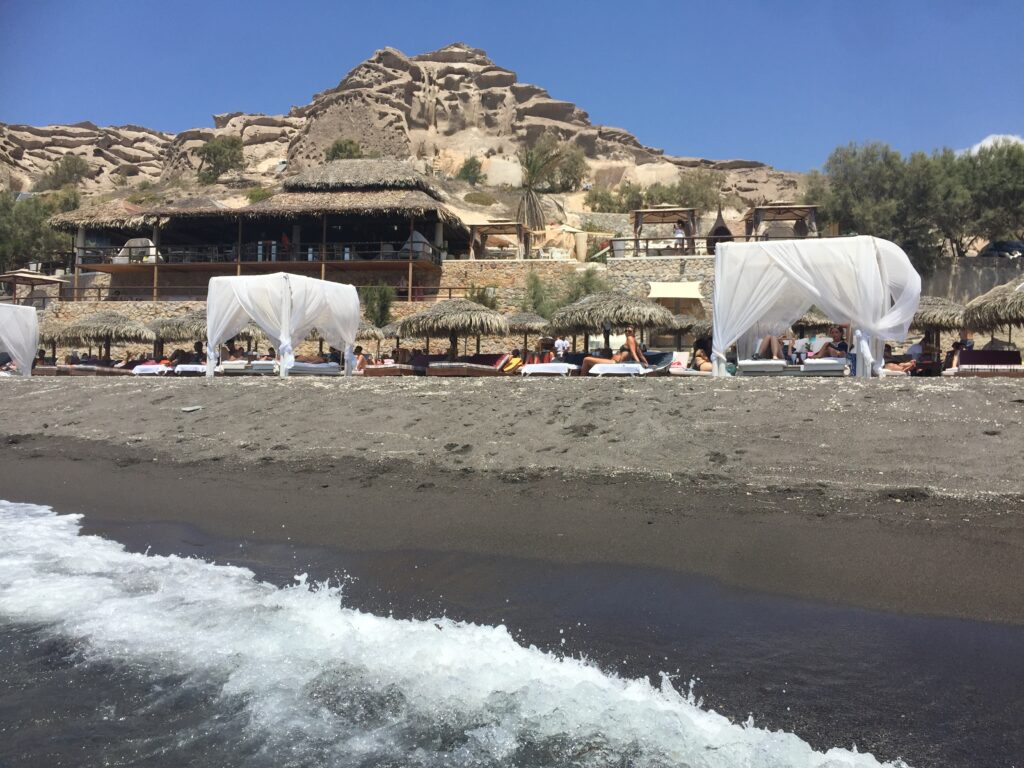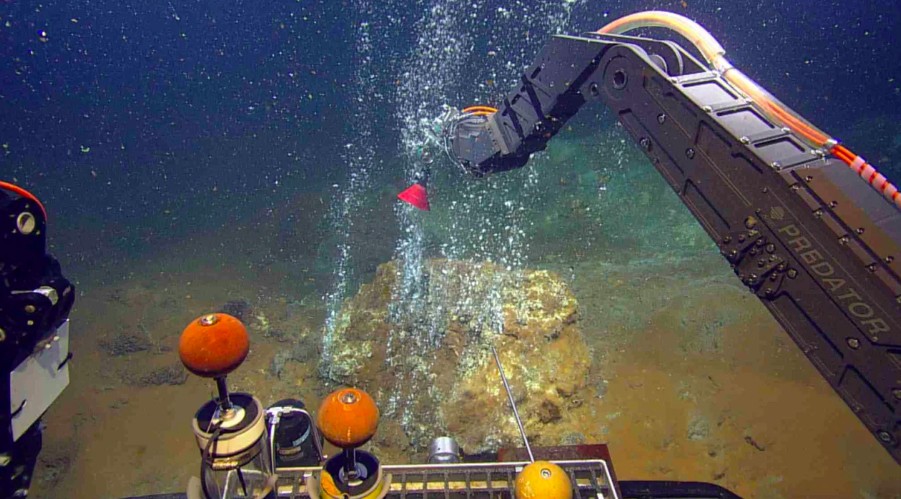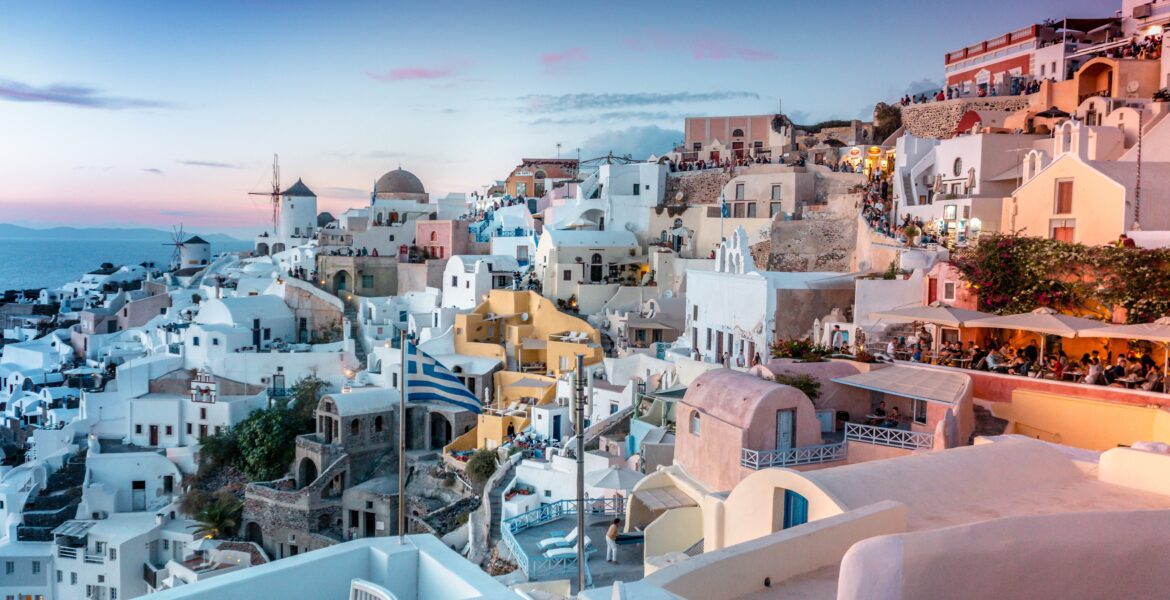Wherever the eye falls in Santorini visitors are reminded that they are on a volcano.
Lunar landscapes, black and red beaches, lava pebbles shape the shocking beauty of the island, which is a result of the region’s violent volcanic history.
Santorini is famous for its impressive crescent-shaped caldera, half of which is submerged – the only submerged caldera in the world.
According to Greek mythology, Santorini was created from a lump of earth that was thrown into the sea by Euphemus, Poseidon’s son. Euphemus had a dream one night that he had made love to a nymph who was the daughter of Triton (the son of Poseidon and Aphrodite). In his dream, the nymph fell pregnant and fearing her father’s reaction begged Euphemus to collect a chunk of soil from the nearby island of Anaphe and to throw it to the sea so she could hide there and give birth to their child. Despite this only being a dream, Euphemus went ahead with the nymph’s request in the realm of reality and as the earth landed into the sea the beautiful island of Santorini (initially named Kallisti) appeared.
According to science, however, Santorini was devastated by one of the largest known volcanic eruptions about 3,600 years ago. The explosion was the equivalent of 40 atomic bombs of the kind that were dropped on Hiroshima. The sound of the eruption was so loud that it would have been heard as far away as Sweden. It was so powerful that it destroyed the ancient city of Santorini, Akrotiri , dealing a huge blow to the Minoan civilisation, burying the island under pumice and rocks.
Today, Santorini is perhaps the most romantic destination in Greece, with luxurious villas and resorts but also dreamy settings with steep volcanic cliffs and magnificent sunsets, which create an impressive geological canvas.
Few of the millions of tourists who flood its narrow streets every summer realise that beneath the enchanting kaleidoscope of colours lies an active volcano.


The Eastern Mediterranean’s most active underwater volcano, Kolumbo, is located 6.5 kilometres northeast of Santorini
Santorini is part of the Greek Volcanic Arc, one of the most significant volcanic fields in Europe, where over 100 eruptions have occurred in the last 400,000 years.
The most active underwater and potentially dangerous volcano of the Eastern Mediterranean, Kolumbo, is located 6.5 kilometres northeast of Santorini and is part of the same volcanic system.
Submerged in the Aegean Sea, Kolumbo has been quiet for almost 400 years, but it does not sleep. The last time it erupted, in 1650, it killed 70 people and caused a 12-meter tsunami. Strong earthquakes and aftershocks were recorded, along with toxic gases and clouds of smoke.
Scientists know that a Kolumbo explosion could cause great destruction.
Some of the world’s largest oceanographic expeditions have visited the volcano, with such visits increasing over the past 20 years.
One of the largest US research vessels, the JOIDES Resolution drillship, sailed to Santorini for its first mission in the Mediterranean between December 2022 and February 2023.
The impressive ship brought “an entire floating laboratory to the area”, volcanologist and mission leader Tim Druitt told CNN. With the ability to drill more than 8,000 meters below sea level, the researchers collected sediments, which had not been available to them before, to try to reconstruct the history of the volcano in the area.
The results – initial reports of which are expected later this year – will help scientists not only predict future eruptions, but also reveal the behaviour of other active volcanoes around the world, which pose a threat to millions of people living in the region . Also, the relationship between earthquakes and volcanoes is to be studied.
Evi Nomikou, a geologist oceanographer at the University of Athens, has taken part in every expedition that has taken place in Santorini in the last 20 years.
“We are gradually building a geological puzzle that shows which parts were originally land and which parts were water,” she tells CNN. “If we can better understand past eruptions and their impact, we have a road map to better address future challenges.”

Ocean with life forms from other planets at the bottom of the Santorini crater
The JOIDES Resolution mission is not the first major study in the region. Ms Nomikou says the well-studied extreme conditions found on Kolumbo led NASA to fund a ground-breaking mission in 2019. “At the bottom of the crater of the Santorini volcano is an ocean with life forms that could be found on other planets.”
The hostile environment, with its active hydrothermal vents spewing hot water and metals, served as an ideal testing ground for new cutting-edge technologies used by Autonomous Underwater Vehicles.
NASA, for example, has tested submersibles that it hopes will one day explore oceans on moons of Jupiter and Saturn.
Another recent study also revealed a previously undetected magma chamber beneath Kolumbo. Scientists believe the chamber may also be the “key” to understanding seismic activity in the area.

Santorini, a “simmering” volcano
Geologists, closely monitoring Kolumbo, warn that a major eruption is only a matter of time. However, “time” in geology is vastly different from real time. So much so that a real estate agent on the island makes it clear that “volcanic activity never enters the conversation” when selling a property.
When it explodes, Kolumbo is capable of creating an explosion tens of kilometres high and is just as likely to cause a tsunami. Increased activity about 10 years ago caused concern at the time, but such evident activity has since subsided.
In 2020 the Greek Civil Protection Service presented a 185-page plan to deal with the consequences of a possible activation of the Santorini volcanic group.
“If we start to see increased activity in Kolumbo, then we need to be alert. The good news is that volcanoes give plenty of warning,” says Druitt.
Read also Theatre for All: Be Part of the 7th Lysicrates Prize


